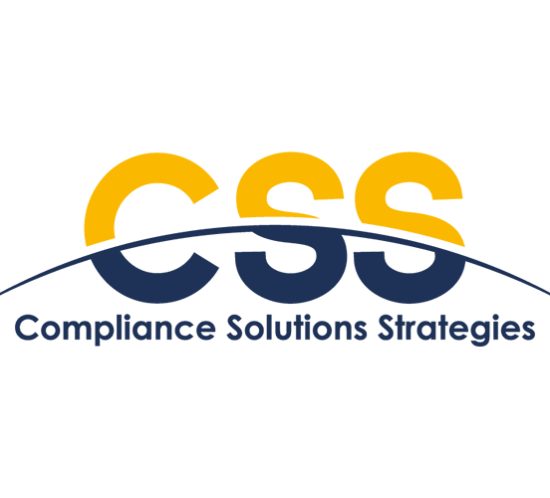Timeline of ESG Regulation Effective Dates
Financial market participants take note: in the EU, ESMA just posted a convenient timeline of ESG regulation effective dates (dated Feb 21st, on the heels of its Sustainable Finance Roadmap 2022-2024 published on Feb 11th). The timeline addresses SFDR, the Taxonomy Regulation, CSRD, and sectoral regimes including MiFID, AIFMD, IDD and UCITS.
ESG: SFDR’s “Article 10” website disclosures
To state the obvious, the EU’s Sustainable Finance Disclosure Regulation (SFDR) has received immense attention from the financial sector in the past year. The multifaceted regime requires firms to make disclosures in a number of different situations, in varying formats, with staggered effective dates, and pursuant to numerous legislative and regulatory texts (some of which are still in draft form or awaiting approval from EU authorities). And of course the Taxonomy Regulation, which in part amends SFDR, has made these challenges even more complex.
Here we’ll narrow our focus to SFDR Article 10, which requires that market participants publish on their websites sustainability information about their “Art. 8” and “Art. 9” financial products. As investment managers and others familiar with SFDR are by now aware, those are funds that have certain ESG characteristics (Art. 8 or “light green” products) or else that make ESG attributes their objective (Art. 9 or “dark green” products). These products are subject to ESG disclosure requirements within pre-contractual statements (e.g. prospectus) and periodic reports (e.g. annual report), according to proposed regulatory technical standards (RTS) and prescribed templates.
That RTS[1] also sets forth what firms must disclose about those products on their websites, in other words how to satisfy SFDR Article 10:
“Article 8” products
(a) Summary
(b) No sustainable investment objective
(c) Environmental or social characteristics of the financial product
(d) Investment strategy
(e) Proportion of investments
(f) Monitoring of environmental or social characteristics
(g) Methodologies
(h) Data sources and processing
(i) Limitations to methodologies and data
(j) Due diligence
(k) Engagement policies
(l) Where an index is designated as a reference benchmark for the purpose of attaining the environmental or social characteristics promoted by the financial product, ‘Designated reference benchmark’
“Article 9” products
(a) Summary
(b) No significant harm to the sustainable investment objective
(c) Sustainable investment objective of the financial product
(d) Investment strategy
(e) Proportion of investments
(f) Monitoring of sustainable investment objective
(g) Methodologies
(h) Data sources and processing
(i) Limitations to methodologies and data
(j) Due diligence
(k) Engagement policies
(l) Attainment of the sustainable investment objective
Although the RTS doesn’t provide a template to follow, it elaborates further on what each of the above-listed topics must encompass, and therefore it should be read closely by firms that are in scope. The effective date for this required “Level 2” RTS adherence to Article 10 is 1 January 2023, in line with many other aspects of SFDR.
Currently, during the period of “Level 1” Article 10 compliance (since 10 March 2021), firms are posting their disclosures under a variety of approaches. Some are addressing Article 10 in a general sense (describing for example their assessment methodologies, and their products’ sustainability features), while remaining cognizant that the text of Article 10 requires disclosure “in a way that is accurate, fair, clear, not misleading, simple and concise and in a prominent easily accessible area of the website”. Other firms are conforming more closely to the RTS-mandated topics, clearly delineating and addressing each of them. Website placement also varies: some disclosures are made accessible on a financial products web page (i.e. list of funds), others on a sustainability or ESG page, and still others on a page dedicated to disclosures or reporting. During the remainder of 2022, and during the RTS effective period in 2023, it’s likely that more firms will coalesce toward a more uniform type of Article 10 disclosure, adhering to the RTS requirements.
Finally, it’s worth noting that much of the same information required to be published under Article 10 is already subject to SFDR disclosure under different circumstances (for example as mentioned above, in pre-contractual and periodic disclosures). Therefore a goal for firms should be to replicate this common information to the extent possible, for website publication and in conjunction with other required website disclosures under SFDR. Such additional disclosures are most often required at entity level (unlike Article 10 disclosures which are at product level), including consideration of sustainability risks in investment decisions (SFDR Article 3), principal adverse impacts on sustainability (SFDR Article 4) and integration of sustainability risks in remuneration policies (SFDR Article 5). Market participants will note that firms have been addressing these additional matters on their websites, to varying degrees, since their Level 1 application started on 10 March 2021. (While Level 2 RTS compliance will be required for principal adverse impact statements starting on 1 January 2023, no RTS is planned for the Article 3 or Article 5 disclosures.)
For more information or to speak with a regulatory expert, please email info@cssregtech.com.
[1] The European Supervisory Authorities (ESAs) proposed the relevant RTS in a Final Report dated 2 February 2021, with Articles 31-57 of the RTS covering SFDR Article 10 requirements. For avoidance of confusion, note that other portions of the RTS are proposed to be amended, to cover certain SFDR provisions added by the Taxonomy Regulation (additional sustainability information required in pre-contractual and periodic reports), as addressed in the ESA’s separate Final Report dated 22 October 2021.
I am raw html block.
Click edit button to change this html
Subscribe today and receive our latest industry updates and articles.
You may unsubscribe at anytime with our simple “unsubscribe” link at the bottom of each communication. Please see our privacy notices below for further information, including a list of affiliates covered by this consent.
Hot New Rules from the SEC
- Reduce 13D / 13G filing deadlines to 5 days
- Require annual cyber security plan reviews
- Require private fund advisers to provide detailed financial reporting quarterly to investors and eliminate conflicts of interest
- Require event driven reporting of information in Form PF beyond current quarterly/annual cycles, and expand reporting requirements
See the details, including links to releases, press releases and fact sheets on our blog post, cliquez ici.
New SEC Rules Re-cap
| Release No. | Date | Details |
| First Quarter | ||
| 33-11028 | Feb. 10, 2022 | Modernization of Beneficial Ownership Reporting File No: S7-06-22 Other Release No: 34-94211 Comments Due: 30 days after publication in the Federal Register or April 11, 2022 (which is 60 days after issuance), whichever is later Submit comments on S7-06-22 See Also: Press Release No. 2022-22; Fact Sheet |
| 33-11028 | Feb. 9, 2022 | Cybersecurity Risk Management for Investment Advisers, Registered Investment Companies, and Business Development Companies File No: S7-04-22 Other Release Nos: 34-94197; IA-5956; IC-34497 Comments Due: 30 days after publication in the Federal Register or April 11, 2022 (which is 60 days after issuance), whichever is later Submit comments on S7-04-22 See Also: Press Release No. 2022-20; Fact Sheet |
| IA-5955 | Feb. 9, 2022 | Private Fund Advisers; Documentation of Registered Investment Adviser Compliance Reviews File No: S7-03-22 Comments Due: 30 days after publication in the Federal Register or April 11, 2022 (which is 60 days after issuance), whichever is later Comments received are available for this proposal. Submit comments on S7-03-22 See Also: Press Release No. 2022-19; Fact Sheet |
| IA-5950 | Jan. 26, 2022 | Amendments to Form PF to Require Current Reporting and Amend Reporting Requirements for Large Private Equity Advisers and Large Liquidity Fund Advisers File No: S7-01-22 Comments Due: 30 days after publication in the Federal Register Comments received are available for this proposal. Submit comments on S7-01-22 See Also: Press Release No. 2022-9; Fact Sheet |
I am raw html block.
Click edit button to change this html
Subscribe today and receive our latest industry updates and articles.
You may unsubscribe at anytime with our simple “unsubscribe” link at the bottom of each communication. Please see our privacy notices below for further information, including a list of affiliates covered by this consent.
SEC Propose Amendments to Modernize Beneficial Ownership Reporting (13D and 13G Rules)
SEC proposed certain amendments to modernize Beneficial Ownership Reporting (13D and 13G Rules). More specifically, SEC proposed: i) new shorter filing deadlines for 13D & 13G Rules, ii) the expansion of the application of Regulation 13D-G to certain derivative securities, iii) the clarification of “Group” formation and related Exemptions and iv) the use of a structured, machine-readable data language which would apply to all information disclosed on Schedules 13D and 13G. The public comment period will remain open for 60 days following publication of the proposing release on the SEC’s website or 30 days following publication of the proposing publication of the proposing release in the Federal Register, whichever period is longer.
Private Fund Adviser Risk Alert Part II
On January 27, 2022, the SEC’s Division of Examinations (the “Division”) published a second risk alert for private fund advisers to summarize for the industry additional observations of deficiencies the Division found during examinations, namely, “(A) failure to act consistently with disclosures; (B) use of misleading disclosures regarding performance and marketing; (C) due diligence failures relating to investments or service providers; and (D) use of potentially misleading ‘hedge clauses.’”
· For review, the first risk alert was published on June 23, 2020, available here https://www.sec.gov/files/Private%20Fund%20Risk%20Alert_0.pdf
· A summary and analysis of the 2020 Risk Alert is available here https://info.compliancesolutionsstrategies.com/Bright-Side-to-Regulatory-Compliance-LP
That the SEC is focused on private fund advisers and that the Private Funds Unit and others at the SEC have gained extensive knowledge on private fund advisers should not be news to anyone managing a private fund at this point in time.
Here is a brief outline of the January 27th published observations.
- Consistency of Conduct with Disclosures
- Use of LPACs: failing to obtain timely and informed consent on conflicted transactions; failing to bring conflicts for review and consent
- Management Fee Calculations: failing to properly calculate in the post-commitment period; failing to reduce after selling, writing off, writing down, or otherwise disposing of a portion of an investment; failing to implement policies and procedures to consistently apply relevant terms of “impairment” “written down” and similar (potentially resulting in inaccurate/inappropriate management fees being charged)
- LPA liquidation and extension terms: failing to comply with provisions in fund documents; failing to obtain required approvals (potentially resulting in inaccurate/inappropriate management fees being charged)
- Investment Strategy: failing to invest in accordance with the strategy disclosed in fund disclosures; exceeding disclosed leverage limitations
- Recycling: failing to accurately describe recycling practices (potentially resulting in inaccurate/inappropriate management fees being charged)
- Key Persons: failing to adhere to key person provisions; failing to provide accurate information to investors on the status of previously employed key persons
- Performance and Marketing
- Track records: failing to provide accurate disclosures on how benchmarks were used, how the track record was constructed, and the impact of leverage; cherry picking track records of one fund or a subset of funds; utilizing stale performance information in presentations; failing to accurately reflect fees and expenses
- Performance calculations: failing to use correct time periods, mischaracterizing return of capital distributions, using projected rather than actual performance
- Portability: failing to maintain books and records supporting predecessor performance; marketing incomplete prior track records; using performance for which the person was not primarily responsible for achieving
- Awards: failing to provide disclosures about the criteria for obtaining awards, the amount of fees paid to receive the award, and the compensation to the grantor of the award for the right to promote the award’s receipt; incorrectly claiming that the investments were “overseen” or “supported” by the SEC or US government
- Due Diligence
- Investment due diligence: failing to perform reasonable investigations of investments; failing to maintain and follow investment due diligence policies and procedures tailored to the particular advisory business
- Service provider due diligence: failing to perform adequate due diligence of service providers, including on alternative data providers and placement agents
- Hedge Clauses
- Limitations on liability: use of clauses in documents and agreements that purport to waive or limit the fiduciary duty or require a person to waive compliance with the Advisers Act and/or related laws and rules
This Alert is yet another reminder that the SEC mandates that fund documents accurately and comprehensively describe the adviser’s operations and, to a certain extent, contingency planning for potential scenarios, including on proprietary interests in investment and other transactions, coinvestment opportunities, key person departures, use of leverage, revenue streams, and fee structures. The adviser must monitor itself in relation to its fund documents, whether facing successes or failures (for example, the SEC wants transparency on fee adjustments, performance metrics and fees, impairments, secondary transactions, fund extensions, etc.); and the necessary contingency planning often involves use of the LPAC or processes for additional disclosures to, and at times consent from, all investors.
Just how an adviser must monitor adherence to fund documents has become an increasingly intricate endeavor. Even more complex may be to understand the Division’s expectations for a compliance team or officer, and the attendant liabilities. To have an effective Compliance Program, the responsibilities must weave through all departments within an adviser throughout the life of the fund, and the books and records must evidence the studied and consistent application of the federal securities laws and rules. Compliance teams and individuals need support in this increasingly complex environment.
We are here to assist private fund advisers and their compliance staff build tailored Compliance Programs that thoughtfully address investor and regulator concerns. For clients, we track enforcement proceedings, guidance, speeches, proposed rules, adopted rules, and more to help clients operate efficiently, successfully, and in compliance. For more information, please connect with us at info@cssregtech.com.
The full text of the January 27, 2022 Risk Alert is available here https://www.sec.gov/files/private-fund-risk-alert-pt-2.pdf
I am raw html block.
Click edit button to change this html
Subscribe today and receive our latest industry updates and articles.
You may unsubscribe at anytime with our simple “unsubscribe” link at the bottom of each communication. Please see our privacy notices below for further information, including a list of affiliates covered by this consent.







